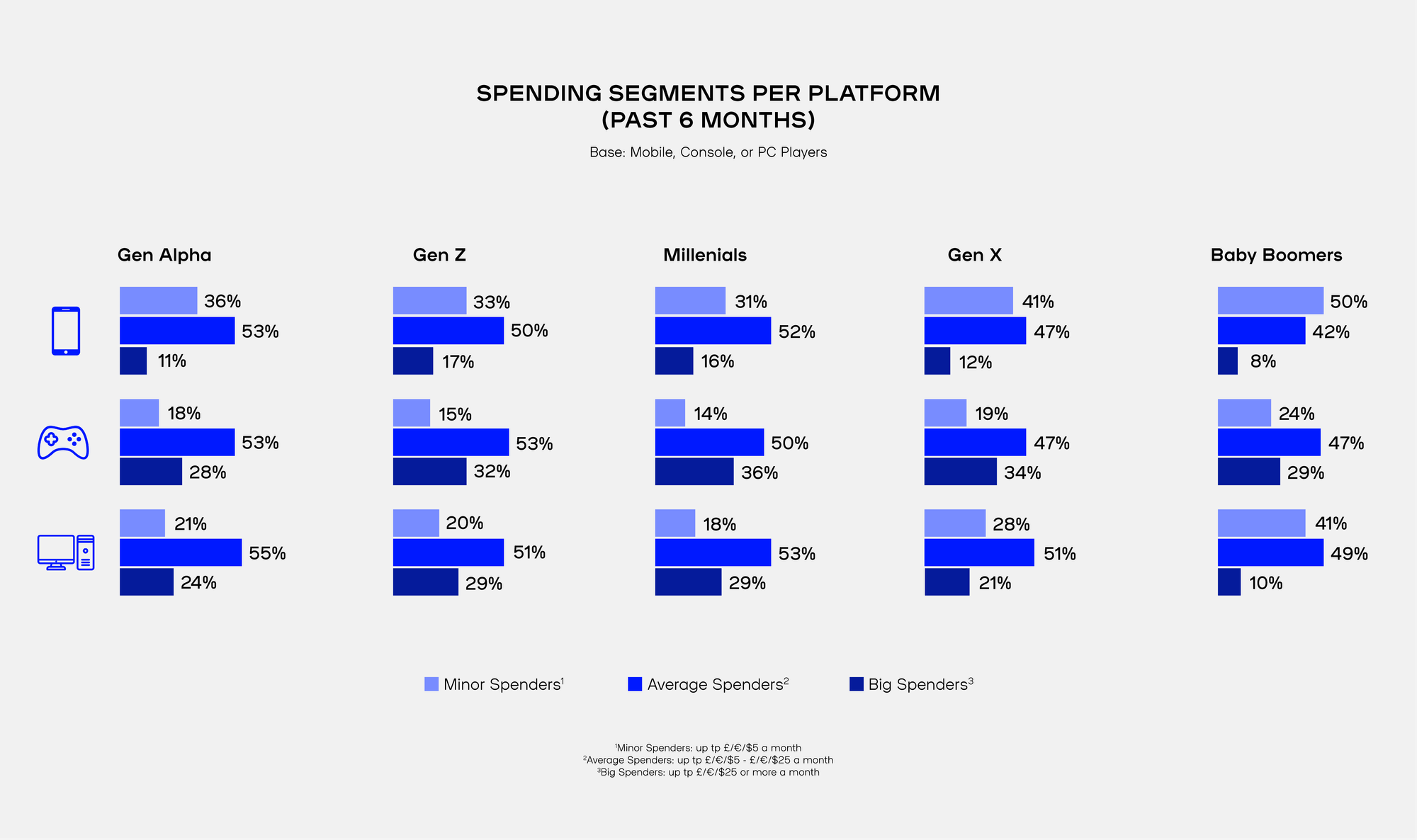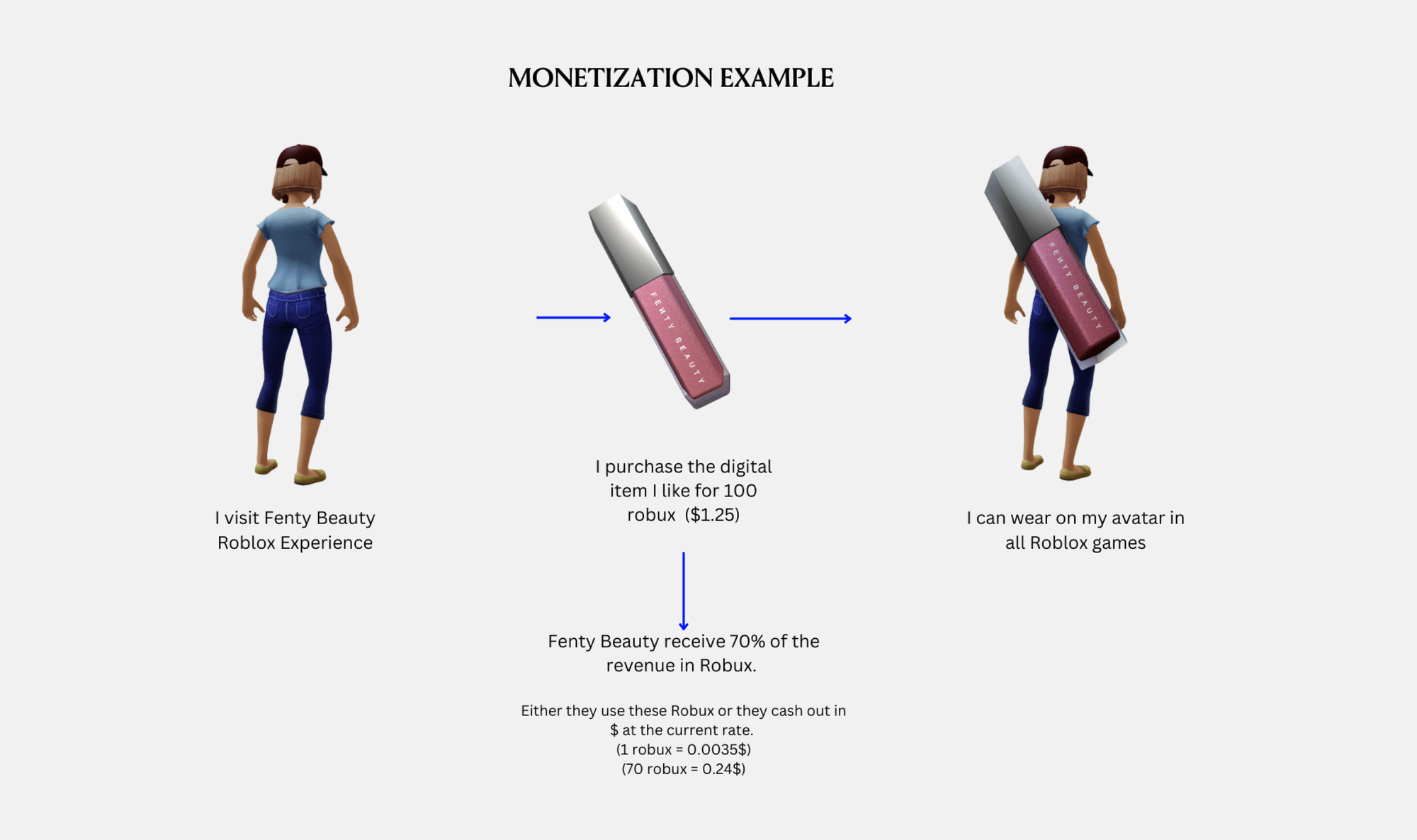
How E-Commerce in Roblox Will Change the Game
- Read time 10min
- published 2024.07.10 updated 2024.07.15
-
what
- Blog
- Brands
- digital asset
- fashion
- Gaming
“Some Roblox creators will make more money from selling physical merchandise on Roblox than virtual merchandise.” – Dave Baszuck, Roblox CEO
The Spending Behavior of Players
When it comes to engaging with gaming, Gen Z and Gen Alpha not only participate more frequently but are also approaching it in entirely new ways compared to their predecessors. According to Newzoo, young generations are more likely to spend money on video games, with 60% of Gen Z and 58% of Gen Alpha players being payers and unlocking content being their top motivator for spending.
Roblox is the playing field of these young generations with over 67% of its 7.7M daily players being under 16 years old. The gaming platform has proven to be an effective marketing channel for brands with 57% of Gen Z and 59% of Gen Alpha reporting discovering new brands while immersed in gaming, and 53% of Gen Z and 57% of Gen Alpha reporting being likely to buy from a brand featured in a game. Therefore, brands across multiple industries are launching UGC items, integrating into popular games, or building custom experiences to build awareness on the platform.
However, Roblox also has the potential to become an effective monetization tool, profiting from the evolving preferences and habits of young generations.

Monetization on Roblox
Roblox is dedicated to empowering its community, offering various ways for creators to monetize their content and experiences. These include subscriptions, access fees, in-game item or ability sales, and private servers for exclusive gameplay. In 2022 and 2023, Roblox reported that its creators earned $624 million and $741 million, totaling approximately $1.4 billion, a 57% increase over the previous two years.
However, Roblox’s economy primarily revolves around the sale of UGC items. According to Roblox, 56% of Gen Z prioritize styling their virtual selves over their physical appearance. This passion fuels a burgeoning market for virtual fashion, with 1.6 billion fashion items and accessories purchased in 2023 alone and a staggering 165 billion avatar updates.
The platform currently has limitations for established brands aiming to use Roblox and UGC assets as a significant revenue-generating tool. Sales of virtual goods are mostly micro-transactions that do not accumulate to a substantial amount, and users cannot link out from Roblox to external websites.
The process for creating and selling UGC items on Roblox involves uploading the item, paying any applicable upload and publishing fees, and submitting the asset for approval. Once the moderation team approves the asset, it is published to the Marketplace, and creators earn a commission every time a user purchases the item in Robux. These Robux can be exchanged for real-world currency, such as US Dollars, at the DevEx exchange rate, which is a little over a quarter of the value of the Robux if purchased.
Despite these challenges, many brands have found innovative ways to leverage Roblox by, for instance, implementing phygital strategies. Toy brand Nerf integrated into popular Roblox games and extended their activation into the physical realm by designing real-world toy guns inspired by the games. These toys came with exclusive codes for players to redeem their virtual counterparts and unlock special abilities.
These campaigns demonstrate the appetite for brands to drive real-world commerce via Roblox. Success stories like Nerf show that Roblox players are willing to spend real money in the physical world, highlighting Roblox’s monetization potential.

The Future of Monetization on Roblox
Roblox CEO Dave Baszuck has been hinting at E-commerce via web linking to guide users from engagement to external websites since October 2022. In May 2024, we witnessed the first efforts toward this vision when Roblox partnered with Walmart for a pilot test of this feature.
In the experience “Walmart Discovered”, players can navigate to a shopping area where three real-life products and their digital counterparts are displayed. By inspecting the items and pressing a “buy” button, players can access the corresponding product page, enabling a standard add-to-cart and checkout process. Following this initial test, Walmart has launched a second UGC collection and partnered with ELF Beauty to bring their products to Walmart’s online line-up.
E-commerce is set to drastically change Roblox’s economics, enabling brands to reach the spending power of Gen Z and Gen Alpha players by selling physical items, which could generate significant revenue
Monetize with Exclusible
Brands that are best poised to succeed in selling real-world items on Roblox are those already active on the platform, learning what works, and capturing the attention of existing players. Those sitting on the sidelines risk falling further behind as the internet becomes more immersive and shopping more gamified.
With Roblox’s vast scale and deep user engagement, we are optimistic that the ongoing pilot tests will reveal strong interest across various user segments in purchasing physical goods within a virtual gaming environment. We are excited to see where this will lead and are ready to help brands capitalize on this emerging opportunity.